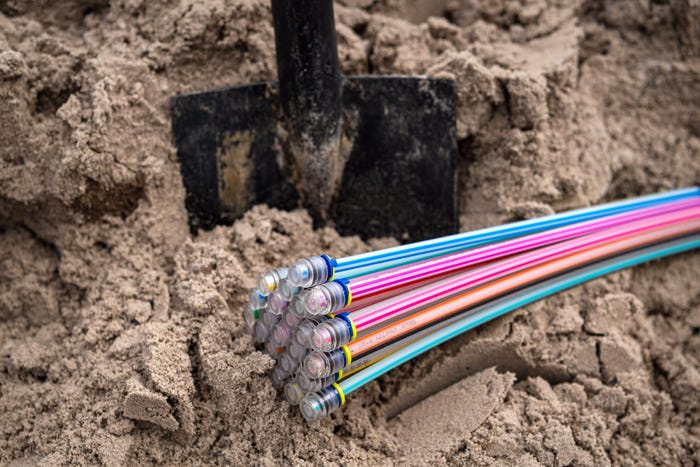Dish CTO serves up challenges, benefits for the cloud-powered 5G network
The benefits of Dish's open RAN, cloud-powered 5G network are 'tremendous,' providing the company with a path to rapid upgrades, says Dish CTO Eben Albertyn. 'But it's not for everybody.'

Dish Network's decision to go with open RAN and the cloud – via partner AWS – has been met with challenges as the company continues to push ahead with its national 5G network. But the benefits Dish is getting from that approach far outweigh those challenges, according to CTO Eben Albertyn.
"Challenges – there are many," Albertyn said Wednesday at the Informa/Light Reading Network X event during a keynote chat. "It's the gift that keeps on giving."
Dish, he said, was surprised by some of the challenges it faced in the role of lead integrator and architect. For example, Dish found early on that it took some additional time to get its vendors and other partners up to speed.
"We were expecting partners to walk with us," he said. "What we figured out was they are learning slower than what we are doing. So we had to learn on their behalf and get them to move at our speed in terms of how we were doing it … Changing the mindset continues to be somewhat of a challenge."
Another challenge/surprise: Dish has had to "invest quite heavily" on network tools that were beyond capabilities of some of the legacy tools available.
Rapid upgrades
Though the challenges are daunting, the benefits of Dish's open RAN, cloud-based approach are likewise "significant," Albertyn said. "We don't occupy ourselves with all the infrastructure, lifecycle management [and] security design," he explained.
A prime example is how rapidly Dish was able to take advantage of a recent AWS upgrade – from generation 5 of its EC2 (Elastic Compute Cloud) to generation 6 – virtually overnight. AWS' upgraded instance was powered by new hardware, switching fabrics, security and firewalling, along with a platform that was about twice as fast as its predecessor.
"I moved my entire core network in one night – from gen 5 to gen 6 … at the push of the button. It doesn't take weeks, it doesn't take months," he said.
Under that rapid, cloud-enabled upgrade model, Dish suddenly had access to more speed, higher security, more features and greater capacity, Albertyn explained in a follow-up video interview with Light Reading that will be posted soon.
By way of example, he said a typical upgrade of that magnitude for a "classical carrier" could run as much as a year.
"The benefits are tremendous to be able to do that. But it's not for everybody," he said.
RIC raves
Albertyn also discussed the advantages Dish hopes to gain from its interest in the RAN Intelligent Controller, or RIC, enabling the company to connect to any amount of compute that is needed.
That "powerful device," he said, also gives Dish, at least in principle, room to decouple the hardware from the software, innovate on what it's doing on the RAN, and take advantage of other benefits such as power management and opening up opportunities to third parties.
"It allows us to make many infinite changes on the system at the speed of software innovation," he explained.
Dish hasn't announced its RIC supplier partners, but Albertyn confirmed the company will start off with a non-real-time approach as standards for real-time technologies are ironed out.
"The standard for [non-real-time] is more fixed, more established," Albertyn said. "I'm loathe to do something on real-time RIC when it's not well-standardized."
Read more about:
Network XAbout the Author(s)
You May Also Like














